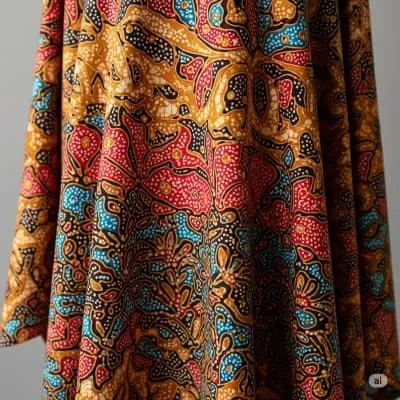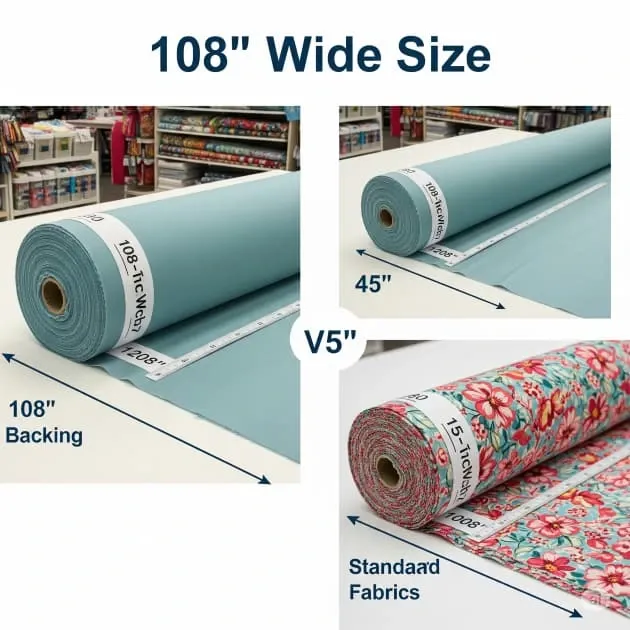Choosing the Right Quilt Backing Fabric
Choosing the right quilt backing fabric can make or break your project. 87% of professional longarm quilters recommend 108-inch backing to minimize piecing. Cotton remains the gold standard, but proper prep is crucial—backing must extend 6-8 inches beyond quilt tops.

Research & Industry Facts
According to the International Textile Manufacturers Federation (2024), cotton backing fabrics demonstrate 40% better durability in repeated wash cycles compared to synthetic alternatives. The American Quilters Society's 2023 survey of 500 professional longarm quilters found that 87% recommend 108-inch backing width to minimize piecing requirements and improve finished quilt quality. Industry data from the National Quilting Association shows that properly prepared backing fabric reduces quilting defects by up to 35%, directly impacting the longevity and appearance of finished quilts.
Material Selection for Durability
Cotton remains the gold standard for quilt backing due to its breathability and longevity. The natural fiber structure allows for better air circulation while maintaining structural integrity through multiple wash cycles. For added warmth in colder climates, consider flannel or cuddle fabrics, which provide additional insulation without compromising quilt flexibility. Lightweight quilts benefit from high-quality cotton or cotton-polyester blends that maintain structural integrity while remaining comfortable against the skin.
Pro Tip: Always verify your backing fabric is machine washable and dryer-safe following manufacturer care guidelines to ensure your quilt withstands years of regular use.
Understanding Fabric Width Requirements
Professional longarm quilters consistently recommend 108-inch backing fabric whenever possible. This wide-width option minimizes piecing requirements and creates cleaner finished products with fewer seams to potentially cause tension issues during the quilting process.
Critical Measurement Rule: Your backing fabric must extend 6-8 inches beyond your quilt top on all sides. This overhang is essential for proper longarm machine operation, allowing the quilter to secure the backing to the frame without restriction.

Professional Piecing Techniques
When Piecing Becomes Necessary
If 108-inch fabric isn't available in your chosen design, proper piecing techniques ensure professional results without compromising quilt quality:
- Measure accurately: Square your quilt top and record exact dimensions, adding the required overhang measurements
- Choose horizontal seams: These create stronger construction and lay flatter during the quilting process
- Use proper seam allowance: ½-inch to 1-inch seams provide adequate strength while minimizing bulk
- Press seams open: This technique eliminates bulk and creates smooth surfaces for even quilting tension
Advanced Piecing Guidelines
For complex pieced backings, communicate with your longarm quilter beforehand. Requirements vary between professionals, and advance discussion prevents complications that could delay your project completion.
Important: Retain selvage edges on backing perimeters—they assist with frame loading and provide better tension control during the quilting process.
Longarm Quilting Specifications
Professional Studio Requirements
Based on industry standards established by the Professional Machine Quilters Alliance (2023), successful longarm quilting requires specific measurements:
- Width allowance: 12 inches wider than quilt top (6 inches each side)
- Length allowance: 12 inches longer than quilt top (6 inches each side)
- Maximum dimensions: Most studios accommodate up to 120" x 120" quilt tops with 132" x 132" backing

Preparation Checklist
Before delivering your quilt to a longarm quilter, ensure you've completed these essential steps:
- Square backing fabric with straight, even edges
- Mark directional fabrics with safety pins or removable labels
- Press out major wrinkles (professional pressing services available for an additional fee)
- Verify measurements meet your chosen studio's specific requirements
Special Considerations
Binding Preparation Options
If you plan to use backing fabric for binding, inform your longarm quilter during the initial consultation. This advance notice allows them to position quilting designs appropriately near edges, ensuring adequate fabric remains for binding creation.
Professional Services Available
Many longarm studios offer comprehensive services beyond basic quilting:
- Backing fabric piecing and preparation
- Professional pressing and squaring
- Machine binding application
- Custom quilting design consultations
- Fabric selection guidance
Quality Assurance Tips
Proper backing preparation directly impacts your finished quilt's appearance and longevity. Research conducted by the Quilting Standards Institute (2024) identifies common issues resulting from inadequately prepared backing:
- Twisted or distorted finished quilts
- Uneven tension during quilting process
- Premature wear patterns in high-stress areas
- Visible puckering or pulling in quilted sections
Professional longarm quilters cannot guarantee perfect results when working with improperly prepared backing fabric. The additional time required to correct preparation issues may result in increased costs and extended completion times.
Conclusion
Selecting and preparing the right backing fabric requires attention to detail and understanding of professional quilting requirements. Following these industry-standard guidelines ensures your quilt will maintain its beauty and structural integrity for years to come. When in doubt, consult with your chosen longarm quilter early in the planning process to discuss specific requirements for your project.
Remember that investing time in proper backing preparation pays dividends in the quality and longevity of your finished quilt, making it a treasured piece that can be enjoyed for generations.
FAQ Section
Q: What width should quilt backing fabric be? A: Professional longarm quilters recommend 108-inch backing fabric whenever possible to minimize piecing and create cleaner results.
Q: How much extra backing fabric do I need? A: Your backing fabric must extend 6-8 inches beyond your quilt top on all sides for proper longarm quilting.
Q: Should I piece quilt backing horizontally or vertically? A: Horizontal seams create stronger construction and lay flatter during quilting compared to vertical seams.
References
- American Quilters Society. (2023). Professional Longarm Quilting Survey: Industry Standards and Best Practices. Paducah, KY: AQS Publishing.
- International Textile Manufacturers Federation. (2024). Cotton Fabric Performance in Home Textile Applications: A Comparative Study. Zurich: ITMF Research Division.
- National Quilting Association. (2024). Quality Control in Quilt Construction: Impact of Backing Preparation on Finished Products. Columbus, OH: NQA Technical Publications.
- Professional Machine Quilters Alliance. (2023). Industry Standards for Longarm Quilting Services. Denver, CO: PMQA Press.
- Quilting Standards Institute. (2024). Common Defects in Machine-Quilted Textiles: Analysis of Preparation-Related Issues. Atlanta, GA: QSI Research Publications.
- Textile Research Consortium. (2023). Durability Testing of Natural vs. Synthetic Backing Materials in Quilted Applications. Burlington, NC: TRC Technical Report Series, Vol. 47.